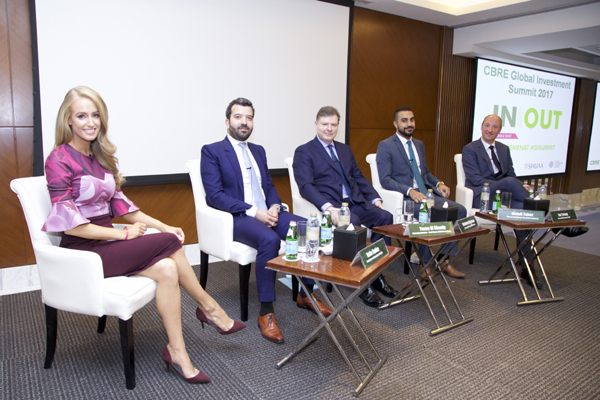
Mideast capital boosts global real estate market
MANAMA, October 30, 2017
Middle East’s outbound capital flows into global commercial real estate (CRE) reached $10.1 billion between the second quarter of 2016 and this year, according to CBRE’s Middle East ‘In and Out’ 2017 report.
Despite a slowdown in outbound investment compared to the previous year, the report states that the Middle East still remains a major source of capital globally, representing 8 per cent of total cross-regional investments.
Whilst international investors remain largely focused on the traditional commercial real estate sectors such as offices, retail and logistics, Middle East investors typically have a strong appetite for alternative asset classes such as hotels, residential, student housing, healthcare as well as infrastructure, the report said.
Investors from the Middle East remain active buyers and continue to target core assets with long leases in safe haven locations. The UAE, for example has made major investments in large-scale infrastructure projects in the UK, such as Gatwick Airport, stated CBRE in its report.
London was the top destination for Middle Eastern investment during the 12-month period hitting $1.7 billion, followed by New York at $820 million, Washington ($469 million) and Frankfurt ($348 million).
During the last 12 months, the volume of institutional investments within the region has been limited. This is driven by several key factors, including the strategy of sovereign wealth funds (SWFs) and other private money to invest outside oil-based economies for diversification reasons, and, to a lesser extent, the impact of regional sensitivities.
Nick Maclean, the managing director, CBRE Middle East, said: "In spite of fluctuating oil pricing, capital leaving the Middle East region has continued to target global real estate markets. Investors have expressed their intention to increase global real estate spending, as a proportion of all investment asset allocations."
"This is driven by a perceived need to diversify income streams by asset class and geography," observed Maclean.
CBRE said in line with previous years, the sovereign wealth funds (SWFs) remain the main source of capital for investments from the Middle East.
Outbound investments by SWFs witnessed a decline of 17 per cent y-o-y, but still acquired $5.4 billion in real estate assets globally.
Certain SWFs continued to deploy capital into real estate, with funding coming from oil revenues, returns from assets under management and a higher allocation to alternatives, it stated.
According to CBRE, the high-net-worth individuals and private investors were less active compared to previous years, which indicates that this group might be more susceptible to adverse market conditions.
In terms of inward capital flow, despite economic headwinds, investment activity has remained strong in some core locations, reflecting the sustained appetite for institutional assets in markets such as the UAE.
During the priod between the second half of 2016 and the first half of 2017, some major investment deals were completed, including high profile commercial office transactions in Dubai and the sale of several industrial portfolios.
However, appetite for hospitality assets has waned considerably amidst a sustained downturn in revenue performance, said the property expert.
In overall terms, the regional investment market remains characterised by low deal volumes and relative illiquidity, which has proven to be a consistent barrier for international capital, and for the development of a more formal and sizeable investment market.
However, the relative illiquidity is not driven by a lack of capital for deployment, rather it is the lack of available investment product for sale, it stated.
Commenting on inward capital flow, Maclean, said: "The Middle East real estate sector continues to offer attractive investment opportunities, but so far the market’s full potential is still to be realised amidst limited availability of investment grade product and low investment volumes"
"Despite these challenges, we expect to see the market open up in the coming years, as regional governments access new avenues for capital raising whilst balancing strong development ambition with an environment of lower hydrocarbon revenues and regionally tighter liquidity," he added.
On the future of the region, Jos Tromp, the head of EMEA Research, said: "As economies continue to open-up and become more receptive to inward investment, we would expect to see foreign allocations of capital to Middle East property increase exponentially, although it could take some time before the Middle East generates investment volumes more reflective of its true size and potential."-TradeArabia News Service







